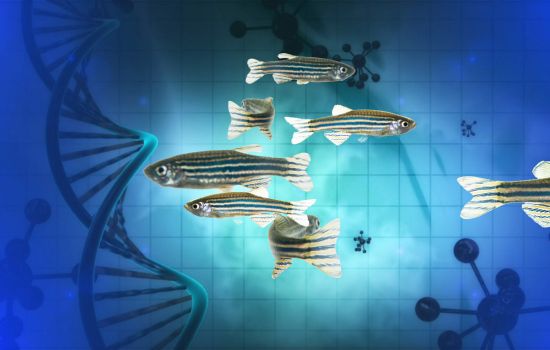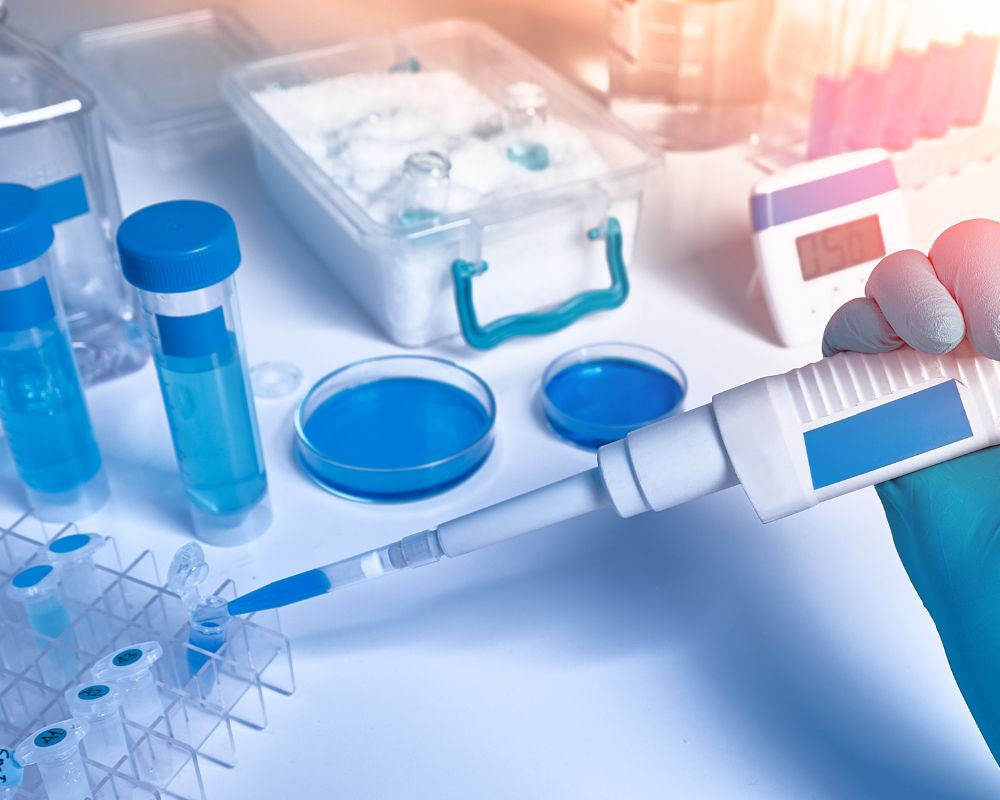Accurate Zebrafish Toxicity Testing for Gene Expression Studies
More Preclinical CRO Services
Why Use Zebrafish?
Similarity:
Many genes are highly conserved between humans and zebrafish, making them a useful system for study the basic mechanisms of organ-specific diseases, such as heart, liver or neurological disorders. This similarity underscores the importance of accurate zebrafish toxicity testing for gene expression studies.


Time Saving:
Zebrafish toxicity testing develop rapidly; all of their major organ systems become fully formed during the early larval stages, making it a recognized standard model to assess organ toxicity. This rapid development aids in the assessment of chronic fish toxicity over longer periods.
Even at an early stage, zebrafish embryos show concordance at a metabolic pathway level, confirming its utility as a model to screen the toxic potential of compounds on major organs*. The toxicity in fish, especially at the embryonic stage, provides critical insights into the toxicity of chemicals across different life stages.
For instance, zebrafish are comparable with a mammalian model: 94% of chemicals that were toxic in rat embroys could have also been shown to be toxic in zebrafish embryos, highlighting the critical role of fish embryo toxicity tests in understanding acute toxicity effects and toxicity profiles (link from below).
Embryo Acute Toxicity Test
What: Acute developmental toxicity studies in zebrafish can predict mammalian exposure levels associated with embryotoxicity and teratogenicity.
Goal/Result: By testing a range of concentrations, we define concentrations such as the LD50, NOEL, and MNLD.
How: Our team tests the teratogenicity of compounds on a battery of morphological development endpoints, as well as two behavioral outcomes, for zebrafish embryos between 24 and 120 hours post fertilization (hpf). This protocol is more comprehensive than the set of 4 endpoints prescribed by the OECD FET 236, providing a thorough examination of fish embryo toxicity tests.
Data Collection: All toxicity screening data is collected in an automated, high-throughput workflow that combines experimental endpoints collected into a developmental hazard profile report, while retaining individual animal-level details and providing raw data files for user analysis.
- Assessed at 24 hpf: mortality, developmental progression, spontaneous movement, notochord development.
- Assessed at 120hpf: total mortality, body axis (body axis non-linearity, eye edema, yolk sac edema and pericardial edema and brain malformation), otic vesicle, pectoral fin, caudal fin, pigmentation, blood circulation, swim bladder formation, not present or not inflated.
- Assessed at 24 hpf: mortality, developmental progression, spontaneous movement, notochord development.
- Assessed at 120hpf: total mortality, body axis (body axis non-linearity, eye edema, yolk sac edema and pericardial edema and brain malformation), otic vesicle, pectoral fin, caudal fin, pigmentation, blood circulation, swim bladder formation, not present or not inflated.
- Embryo Photomotor Response (EPR) behavior. EPR is used as an early, rapid and sensitive predictor of generalized adverse outcomes later in life, not restricted to behavioral endpoints. The EPR assay is used as an early sensor of chemical developmental hazard at 22-24 hpf.
- Larval Photomotor Response (LPR) behavior. LPR can reveal neuromuscular effects of compounds that may not be detected with morphological malformations. At 120 hpf (5 days post fertilization) zebrafish are free swimming larvae and the photomotor response assayed total movement (swim distance) in response to multiple light/dark transitions.
Molecular Testing
What: Provide mechanistic insight into toxicity responses in developing zebrafish at a whole transcriptome level to deliver a high depth, high resolution analysis of the underlying biology of your compound of interest.
Goal/Result: We will perform gene expression studies to characterize mechanisms of action.
How: Perform single embryo RNA-seq analysis on a range of conditions, beginning at exposure and RNA isolation to sequencing and bioinformatic analysis, in a high throughput, automated workflow.

Other Toxicity Testing Services
Hepatotoxicity Testing
Determine whether a compound or formulation induces liver damage. Measurements using early life-stage zebrafish include gross tissue health, necrosis, liver function and cell death, vital for understanding single-organ toxicity assays.
Assess whether a compound or formulation induces nervous system damage. Early life-stage zebrafish will be used to measure neural gene expression via qPCR.
Cardiotoxicity Testing
Assess whether a compound or formulation induces heart damage in zebrafish. Early life-stage zebrafish will be used to assess cardiac function, highlighting the importance of identifying cardio toxicity risk candidates.
Our Process

Introduction
Understand Your Goal
We will set up a 30-minute call with you to understand your needs. During this call, we will define the scope of your project, answer your practical questions and help you assess whether our service is a good fit for you.

Design
Create A Custom Catalog
After we decide on the scope of the project, we will create a proposal that includes cost and time estimate for each experiment proposed. You will be able to personalize your project plan.

Logistics
Finalize Project Design
We will send you a final statement of work and payment schedule. Once we receive your first PO, we will start the experiments and give you a defined timeline for your project.

Report Out
Maintain Clarity And Transparency
We will keep you updated every two weeks on the status of your project. At the end of your project, we provide you with a report that includes comprehensive findings and key takeaways.
Ready to get started?
Ready to connect with us to learn more about working with our company or our technology?
Submit your inquiry below & we will get back to you soon.
